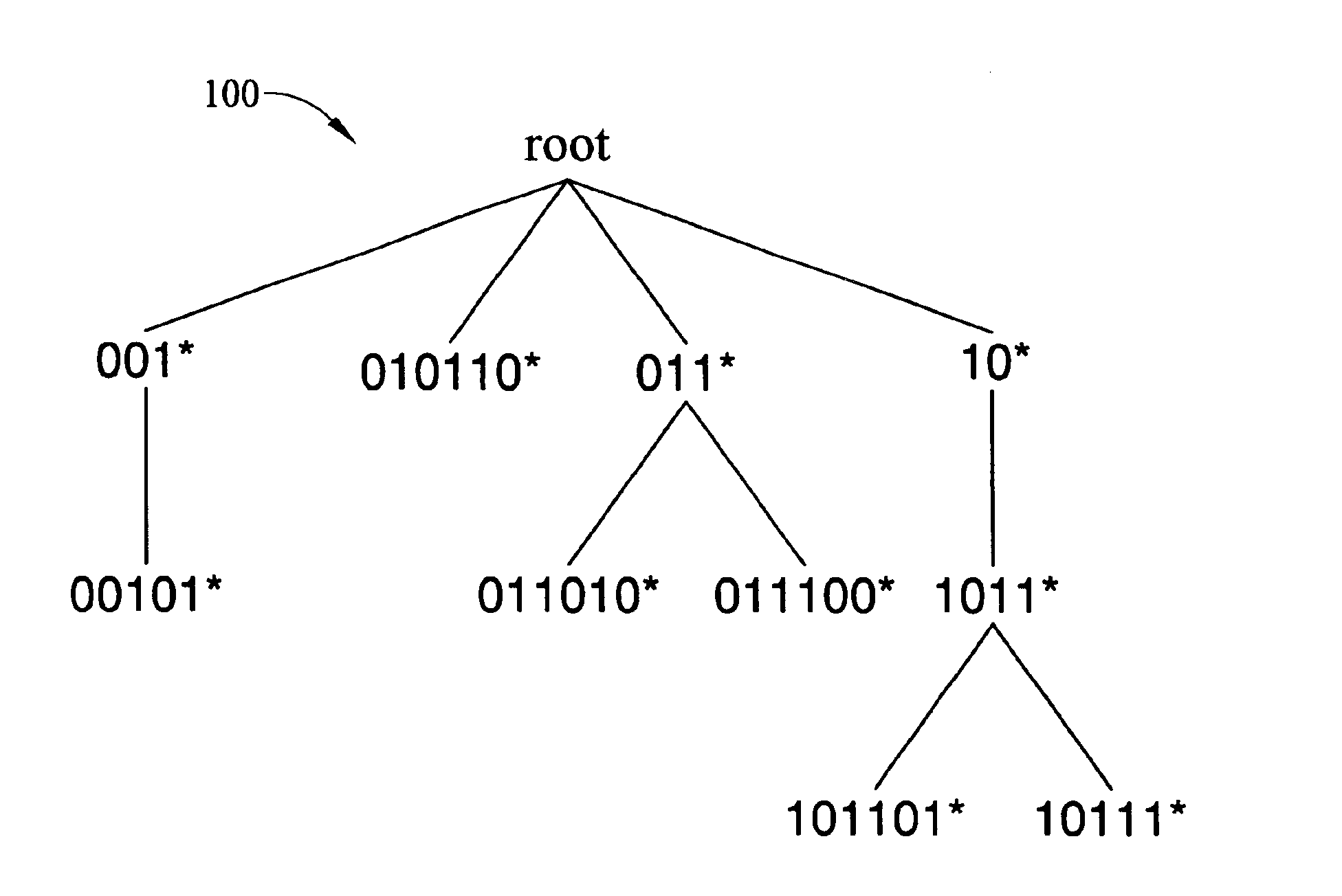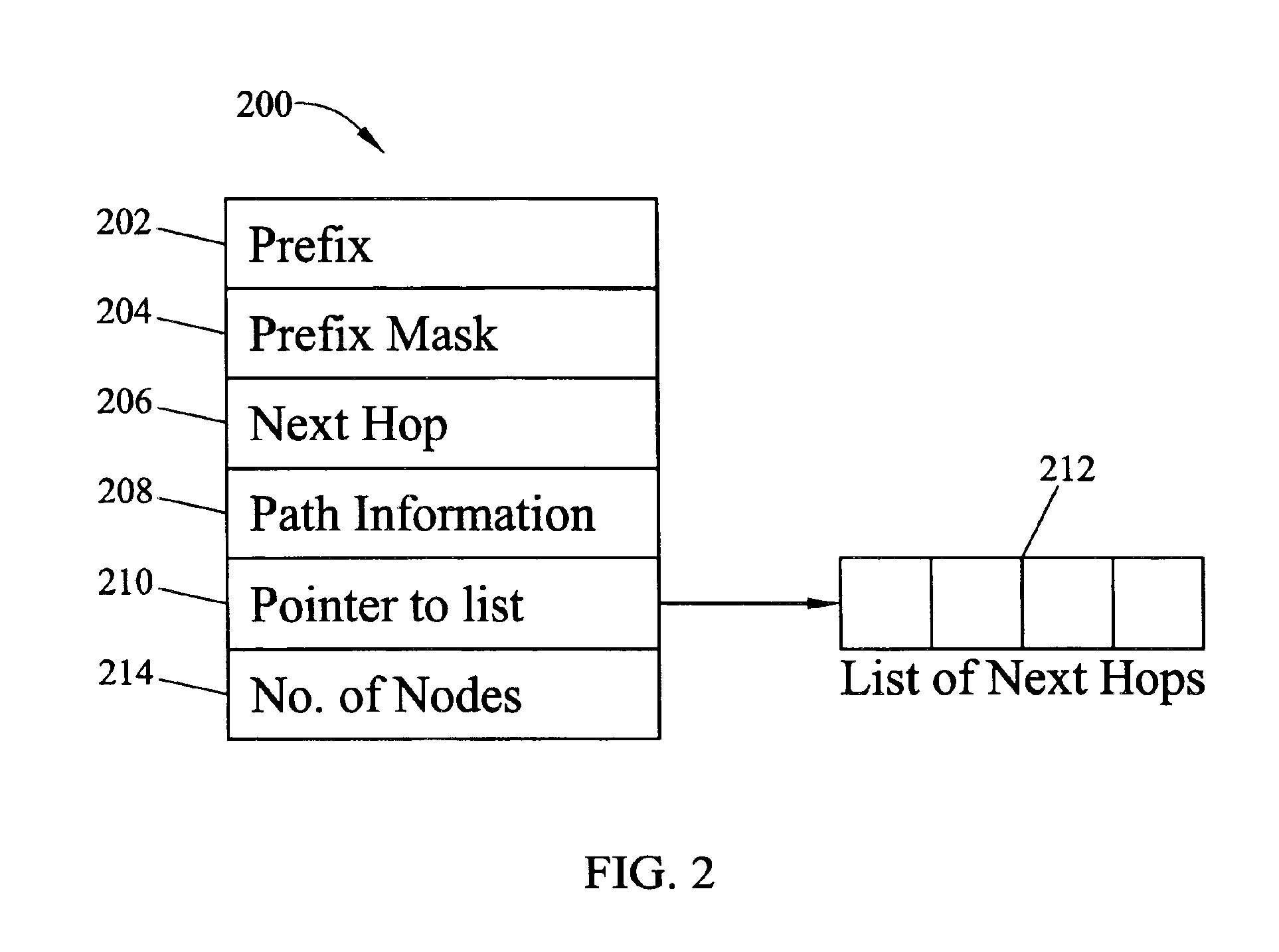Methods and systems for fast binary network address lookups using parent node information stored in routing table entries
a binary network address and parent node technology, applied in the field of methods and systems for fast binary network address lookups, can solve the problems of large address size, large number of accesses, and former approach not scaling well with large address sizes, so as to reduce the number of accesses, reduce the size of the routing or forwarding table, and reduce the number of steps required
- Summary
- Abstract
- Description
- Claims
- Application Information
AI Technical Summary
Benefits of technology
Problems solved by technology
Method used
Image
Examples
Embodiment Construction
[0022]In order to explain details of the invention, it is necessary to illustrate an exemplary binary tree constructed based on routing table entries according to the invention. Table 1 shown below illustrates an exemplary routing table.
[0023]
TABLE 1Routing Table with Prefixes and Destination Network AddressesPrefixNext Hop 10*3 1011*9 011*8010110*5 001*4101101*2011010*6011100*1 10111*8 00101*7
[0024]In Table 1, each entry in the left hand column corresponds to a variable length network address prefix, with “*” corresponding to a wild card. The right hand column in Table 1 corresponds to the next hop address. Table 2 shown below illustrates Table 1 after sorting the prefixes in ascending order according to their numeric values.
[0025]
TABLE 2Prefixes from Table 1 After SortingPrefixNext Hop 00101*7 001*4010110*5011010*6011100*1 011*8101101*2 10111*8 1011*9 10*3
[0026]As stated above, the present invention includes storing path information indicating the parent nodes of each prefix...
PUM
 Login to View More
Login to View More Abstract
Description
Claims
Application Information
 Login to View More
Login to View More - R&D
- Intellectual Property
- Life Sciences
- Materials
- Tech Scout
- Unparalleled Data Quality
- Higher Quality Content
- 60% Fewer Hallucinations
Browse by: Latest US Patents, China's latest patents, Technical Efficacy Thesaurus, Application Domain, Technology Topic, Popular Technical Reports.
© 2025 PatSnap. All rights reserved.Legal|Privacy policy|Modern Slavery Act Transparency Statement|Sitemap|About US| Contact US: help@patsnap.com



